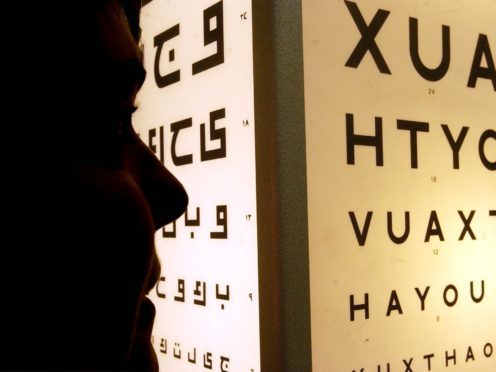An 86-year-old man who received groundbreaking stem cell treatment for macular degeneration says he feels “so lucky” to have his sight back.
Douglas Waters, 86, and a woman in her early 60s who has chosen not to be named, took part in a clinical study using genetically engineered tissue implanted into the eye.
Age-related macular degeneration is the most common form of sight loss in the UK and leads to rapid loss of central vision.
Both patients successfully regained their reading vision from barely being able to read at all.
Mr Waters, from Croydon, south London, said: “In the months before the operation my sight was really poor and I couldn’t see anything out of my right eye.
“I was struggling to see things clearly, even when up-close.
“After the surgery my eyesight improved to the point where I can now read the newspaper and help my wife out with the gardening.
“It’s brilliant what the team have done and I feel so lucky to have been given my sight back.”
It is the first time an engineered piece of tissue has been successfully used to treat people with sudden severe sight loss.
The study into AMD – a condition which affects more than 600,000 people in the UK – is a major milestone for the London Project to Cure Blindness.
Researchers believe it could lead to an “off-the-shelf” treatment within five years.
The study, published in the journal Nature Biotechnology, was the result of a partnership between Moorfields Eye Hospital NHS Foundation Trust, the UCL Institute of Ophthalmology, and the National Institute for Health Research (NIHR).
Professor Lyndon da Cruz, consultant ophthalmologist at Moorfields Eye Hospital NHS Foundation Trust, said: “The results suggest that this new therapeutic approach is safe and provides good visual outcomes.
“The patients who received the treatment had very severe AMD, and their improved vision will go some way to enhance their quality of life.
“We recognise that this is a small group of patients, but we hope that what we have learned from this study will benefit many more in the future.”
The study investigated whether the diseased cells at the back of the patients’ affected eye could be replenished using a stem cell patch.
A specially engineered surgical tool was used to insert the patch under the retina in the eye of each patient in an operation lasting one to two hours.
The patients – who went from not being able to read at all, even with glasses, to reading 60-80 words per minute with normal reading glasses – were monitored for 12 months and reported improvements to their vision.
Professor Pete Coffey, from the UCL Institute of Ophthalmology, said: “This study represents real progress in regenerative medicine and opens the door on new treatment options for people with age-related macular degeneration.
“We hope this will lead to an affordable ‘off-the-shelf’ therapy that could be made available to NHS patients within the next five years.”
Cathy Yelf, chief executive of charity the Macular Society which donated £100,000 to help fund the research in 2008, said: “We know how challenging this project has been over the past 10 years.
“Of course it’s still in its early days and there needs to be bigger trials to test whether this is effective in more people. But, it’s an exciting step along the way and we’re extremely proud to have been able to fund this project in its early days.”
